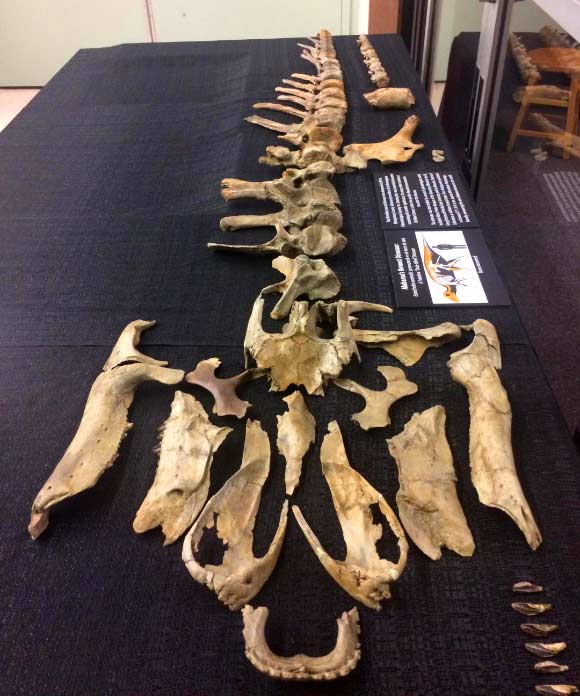A team of paleontologists has discovered a new species of primitive duck-billed dinosaur, called Eotrachodon orientalis, in Alabama.

Eotrachodon orientalis: left lateral view of the assembled skull. Image credit: Albert Prieto-Marquez et al.
Measuring about 25 feet (7.6 m) long, Eotrachodon orientalis lived about 83 million years ago, in the Upper Cretaceous period.
According to a paper published online last week in the Journal of Vertebrate Paleontology, it is one of the oldest hadrosaurids (popularly known as duck-billed dinosaurs) known and the only hadrosaurid from Appalachia (present day eastern North America) with a preserved skull.
“This is a really important animal in telling us how they came to be and how they spread all over the world,” said team member Prof. Gregory Erickson, of Florida State University.
The fossilized skeleton of Eotrachodon orientalis, including a skull, several backbones, a partial hip bone and a few bones from the limbs, was originally found by fossil enthusiasts alongside a creek near Montgomery, Montgomery County, Alabama, southeastern United States.
The dinosaur mostly walked on its hind legs though it could come down on all four to graze on plants with its grinding teeth, and had a scaly exterior. But what set it apart is that it had a large crest on its nose.
“This thing had a big ugly nose,” Prof. Erickson said.

Rremains of Eotrachodon orientalis are on display in McWane Science Center. Image credit: Jun Ebersole, McWane Science Center.
During the Upper Cretaceous, “North America was divided in half by a 1,000 mile ocean that connected the Gulf of Mexico to the Arctic Ocean,” the scientists said. “This body of water created two North American landmasses, Laramidia to the west and Appalachia to the east.”
“The area of what was considered Appalachia is a bit wider than what we call Appalachia today. It began roughly in Georgia and Alabama and stretched all the way north into Canada.”
“For roughly 100 million years, the dinosaurs were not able to cross this barrier,” said Dr. Jun Ebersole of McWane Science Center.
“The discovery of Eotrachodon orientalis suggests that duck-billed dinosaurs originated in Appalachia and dispersed to other parts of the world at some point after the seaway lowered, opening a land corridor to western North America.”
“They just needed to get off the island,” Prof. Erickson added. “From there, they became the cows of the Cretaceous.”
_____
Albert Prieto-Marquez et al. A primitive hadrosaurid from southeastern North America and the origin and early evolution of ‘duck-billed’ dinosaurs. Journal of Vertebrate Paleontology, published online January 13, 2016; doi: 10.1080/02724634.2015.1054495







